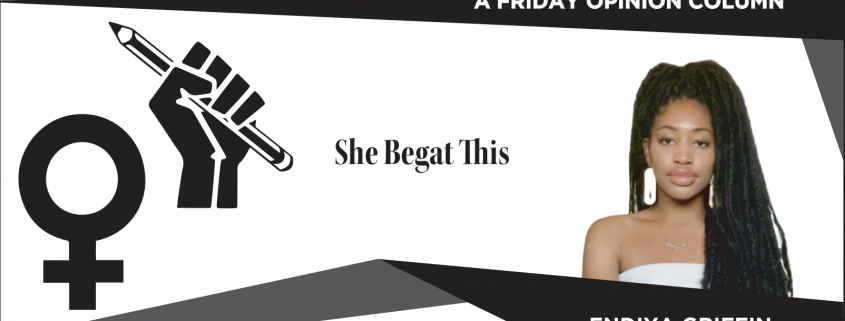She Begat This: Manufacturing martyrdom: Calling victims of police violence martyrs is problematic
Over the past decade, the forces of state violence have pushed the names of numerous Black victims of police brutality into the realm of metonymy. Their names have been invoked as the rallying cry of collective action echoed across the globe. Their images have been reproduced on murals, billboards, posters and across social media, cementing them as ancestors of the Black Lives Matter movement and icons in our collective history and consciousness.
It is not uncommon to see the likenesses of victims of police brutality placed atop altars, surrounded by flowers, candles and posters calling for justice as if the victims themselves were religious sacrament. However, these actions of reverence, though well-intentioned, can communicate a damaging narrative about the role of victims of police brutality in the movement against state violence.
While it is important that we never forget and continue to learn the names of the thousands of victims of police violence, it is also crucially important that we make one thing clear: These people are not martyrs.
The term martyr is both a noun and a verb. As a noun, it is defined as “a person who sacrifices something of great value and especially life itself for the sake of principle.” The operative word here is “sacrifice;” to sacrifice something implies a level of agency that victims of police brutality are violently stripped of. Not only is referring to these victims as martyrs fallacious, but the implication of agency also distorts the systemic nature of these murders.
As a verb, the word “martyr” means “to put to death for adhering to a belief, faith, or profession.”
Over the past five years alone, on-duty police officers have killed more than 5,000 people, with Black people accounting for nearly 25% of those victims despite making up only around 13% of the United States population.
If these victims died for a belief, faith or profession, it was the belief that they could go to bed in their own homes and wake up the next morning, the faith that they could go for a jog around their neighborhoods and make it home alive, the profession of being Black and breathing.
Black people are not sacrificing their lives to prove a point — they are being senselessly and unsolicitedly murdered in the streets, in their homes and on playgrounds and that is the point. Far from aberrations, these murders reflect pervasive systems of injustice that stem from centuries of racialized violence dating back to the United States post-Civil War Reconstruction and even further to the antebellum period.
Historically, these murders have been termed “lynchings,” defined as “extrajudicial killing by a group.” Derived from the term “Lynch Law,” coined in the early 19th century, the term “lynching” readily evokes early- to mid-century American images of Black suffering and death as witnessed within the public sphere. In their depictions, these images draw sharp parallels to modern-day videos and accounts of police violence.
Not only have names like George Floyd, Breonna Taylor, Ahmaud Arbery, Tony McDade, Nina Pop, Sandra Bland, Michael Brown, Trayvon Martin and Philando Castile among so many more ,been emblematized, but the narratives, videos and images surrounding their deaths have also permeated the public sphere, nonconsensually binding the trauma of their deaths into our collective consciousness.
In her 1895 book “The Red Record,” Black liberation activist, journalist, newspaper editor and sociologist Ida B. Wells Barnett tabulated the statistics and alleged causes of lynching in the United States in an effort to define lynching as “[our] country’s national crime … not the creature of an hour, the sudden outburst of uncontrolled fury, or the unspeakable brutality of an insane mob.”
This appraisal of the uniquely American phenomenon of lynching holds eerily true in its application to the modern-day phenomenon of police violence against Black people. Until we stop manufacturing martyrdom and accept the weighted reality that the cruel American legacy of lynching has not ceased but only transformed its shape, we will never fully understand its impacts, both on the Black community and on the world. Unless we call these modern-day lynchings what they are, denoting the history of racial oppression that accompanies that moniker, we cannot begin to dismantle the system of state violence that perpetuates Black death.
Endiya Griffin is a freshman writing about current events through the lens of social justice and feminism, race and culture. Her column, “She Begat This,” runs every other Friday.

